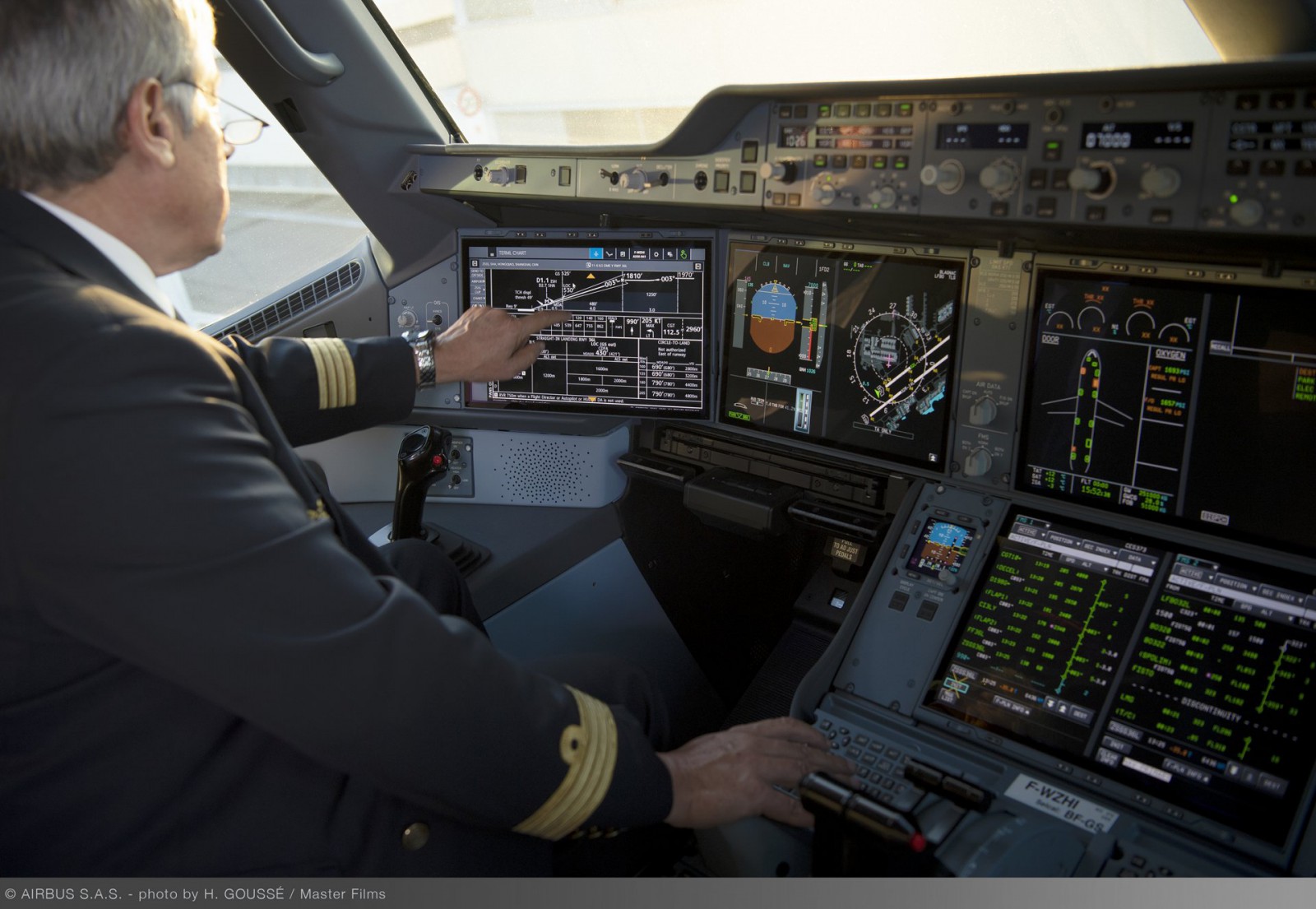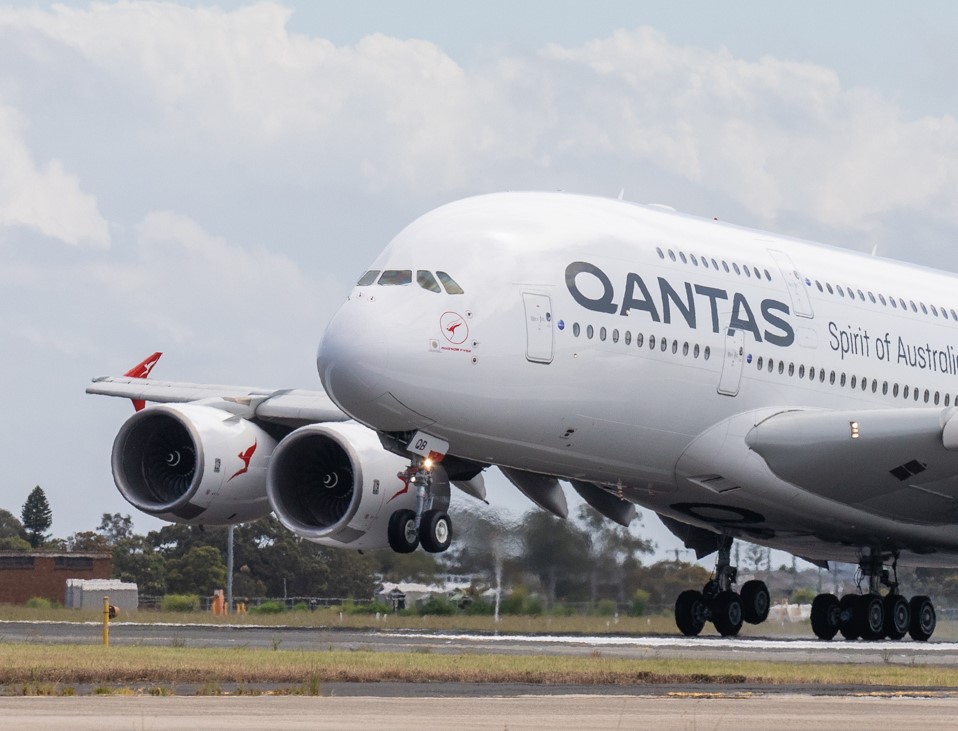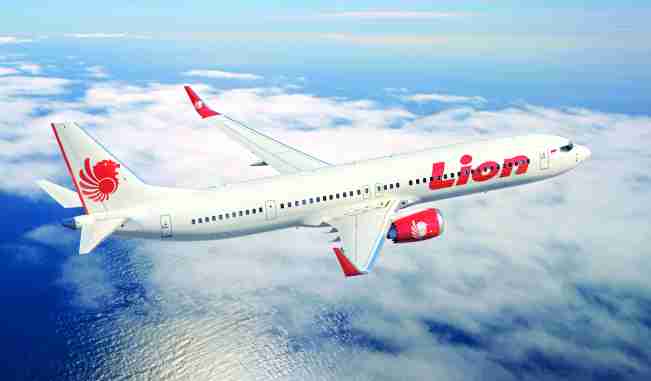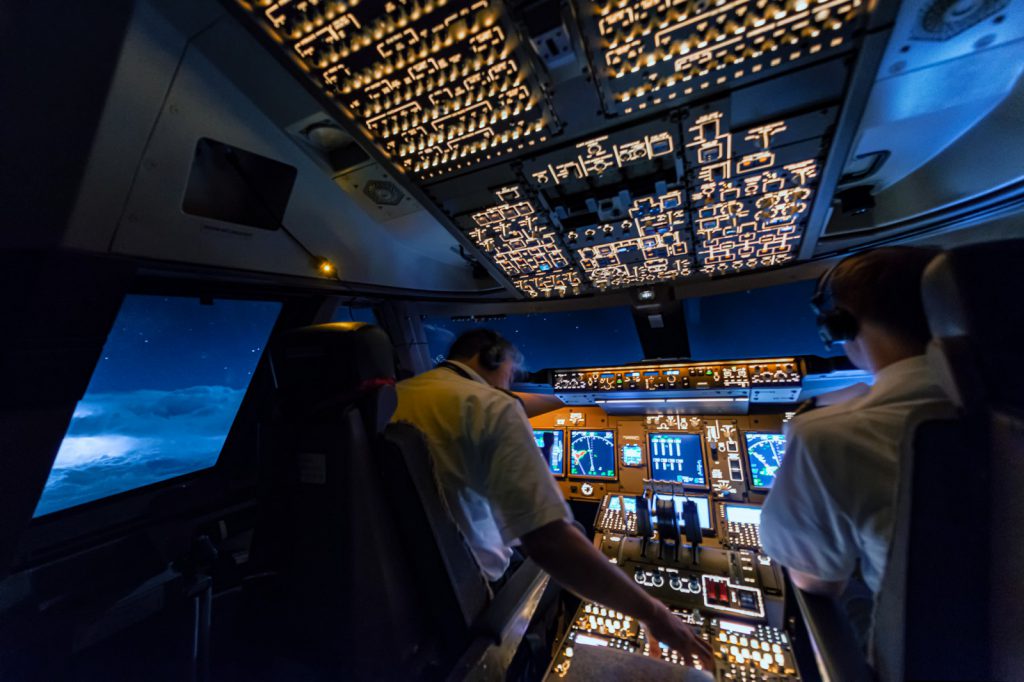Airlines Need To Rethink Pilot Training
22 May, 2023
14 min read
By joining our newsletter, you agree to our Privacy Policy


The world’s airlines need to rethink pilot training if the upward trend of avoidable loss of control accidents is to be reduced according to an updated report “Airline Pilot Training – Time to Revisit the Basics” from the Flight Ops Group of the RAeS.
Authored by former Ryanair chief of safety Captain John Leahy FRAeS and Captain Robert Scott FRAeS and a small team from the Flight Ops Group the report’s (Leahy et al) primary argument is that the quality and duration of pilot training could be on an unrecoverable downward trajectory.
And that warning comes as the US FAA recommends that airlines should allow pilots to hand-fly during normal operations whenever possible.
“The rationale [of the report] is that too many recent accidents, fatal hull losses and Loss of Control (LOC-I) events could be attributed, at least in part, to a lack of flying ability. Flying ability in the sense of manual flight skills and Instrument Flying (IF) skills,” Capt. Leahy told Airlineratings.com.
“We are concerned where official final accident reports fail to allocate cause to what were clearly human-factors failings. These reports would sometimes discover and remark upon the human failing but then move on to cite such effects as startle, surprise and/or illusions as the primary cause of the event. Or cite the failure of some technical system that should have been well within the capability of properly trained pilots. In other words, some reports suggest that the pilots were “caught out” by factors that were beyond their ability to manage.
“Beyond the ability of the average modern human pilot,” questions Capt. Leahy.
He adds that these accident reports often conclude that the focus should be on these external factors rather than improving pilot training to deal with them.”
These effects, Startle, Surprise, Somatogravic Illusion (the illusion of being in a nose-up attitude) and other distractions do of course exist, and some aircraft do have systems that could be better designed adds Capt. Leahy.
“These aircraft will be with us for decades to come. It should be imperative then to employ well-trained instrument-rated IFR pilots able to overcome such issues and recover not only their ability to think and act but to maintain control of the aircraft even after multiple failures,” warns Capt. Leahy.
He points to QF32, the Qantas A380 which suffered an engine explosion on take-off from Singapore in 2011 as a perfect example.
“It suffered dozens (54) of failures yet was landed safely by its well-trained crew.”
The Australian Transport Safety Bureau, which lead the investigation at the invitation of the Singaporean authorities, attributed the skill of the crew in saving the A380.
While, by chance, there were five pilots on the flight deck the crew followed two-crew procedures of the pilot flying, controlling the A380 while the no-flying pilot dealt with the multiple (53) ECAM fault messages.

Poor Standards at Initial Induction
Reflecting on the pressure on airlines of a pilot shortage Leahy et. al. notes the poor standards at the initial induction of pilots.
“A trend we noted during our study of historical accident reports was the employment, by some carriers, of pilots with a history of poor flying ability. Some pilots had even been dismissed by other carriers yet this was no impediment to these pilots joining another airline shortly afterwards,” it stated.
Worse, claims the report “other pilots carry on working within an airline despite repeatedly failing (or barely passing) and needing to repeat annual mandatory simulator or other checks or underperform by other measures. These pilots then remain employed up to the time of the final fatal crash even though there is an adverse document trail leading back to their initial employment.”
Classic cases it notes are those of Atlas 3591, a Boeing 767 in 2019, and Helios 522 and it warns there are many more.
“Where is the quality control of the interview, selection and due diligence process in these cases? Why, when the six-monthly checks expose low standards, are they permitted to remain employed with no remedial training recorded leading to a documented improvement in flying ability,” questions Leahy et al.
A former check and training captain from a major manufacturer told AirlineRatings.com that there was deep concern about the skill level of pilots being trained with a “just good enough” attitude prevailing.
Another manufacturer said it had profound concerns about some airlines that didn’t want their training as it was “too expensive.”
Capt. Leahy and his fellow pilots from RAeS FOG are also concerned about the level of manual flying training at various airlines.
“Manual Flying skills are those where the pilot can manage safe flight without the use of any automation. Commonly called” stick and rudder” skills these relate to the ability to control the aircraft manually without any visual cues such as a visible horizon, using only standard flight instruments and this relies on extensive training.
“IFR pilots are also trained to disregard confusing cues such as G forces and other sensory illusions. Combined, these binary skills are the foundation stone of all commercial pilot training and have been for decades,” says Capt. Leahy.
But he asks are they still being trained?
“The truth is that it is very hard to know since each jurisdiction, regulator, school and airline have a great deal of latitude in formulating training programmes but what we do know is that many schools and airlines excel at training.”
The MAX crashes became too toxic for discussion
Capt. Leahy says that during the initial studies, the team did include the two MAX crashes among the sad tally of what they considered avoidable crashes, attributable in part to poor training. "As time went by, our views, shared by many here at the FOG, were gradually rejected by world opinion which was informed by Congressional enquiries, Boeing’s admissions of culpability, a tidal wave of revulsion and even a Netflix full-length docu-drama Boeing, the Downfall.
“To mention, even softly, that the pilots of those two aircraft, in particular, were in any way deficient, or even to question their training, became unspeakable. It became shameful to even mention that another Lionair crew the previous day had flown the very same aircraft with the self-same MCAS encounter successfully from Bali to Jakarta. The crash the next day was not therefore inevitable,” argues Capt. Leahy.
He adds that “some experts felt that even if our views were correct, and many did, it was a lost cause and it was time to move on. So, we removed the Max crashes from our list of human factor events. But it didn’t end there.”

Capt. Leahy says that “some of us held fast to our belief that to blame Boeing 100 per cent for the twin crashes would have closed the door on the possibility that the training of those pilots was at least a factor. Perhaps a major factor and not just at those two airlines. We still believed that by only blaming Boeing, poor training leading to inadequate performance as a possible cause would never be addressed. This would lead to the world of aviation being a more dangerous place.”
Leahy et, al. say that fixing MCAS was only a band-aid, albeit a necessary one, on a much larger, more costly and more intractable malaise – poor training.
“If the Lionair and Ethiopian pilots might just possibly have been poorly trained along with the twenty or so crews identified in our report, then they are not outliers,” warns Capt. Leahy.
READ: More Omissions in Ethiopian MAX Report
READ: French Investigator Slams Ethiopian MAX Report
The purpose of all air-accident investigations is to find the true cause(s) to avoid repetition and Leahy et. al. warn that in too many cases true cause had not been identified and even when it had, often nothing tangible was suggested or recommended. It adds that since accident reports have no powers of enforcement, often, even those formal recommendations that are included are not always carried out even at the airline involved, nor universally across the industry.
“So, our group continued work on this area, but without any real hope that any other “Higher Authority” was taking much interest.
“We know this because we made high-level approaches including IATA. We did however have some encouragement; the FAA had been working on a project paper called Flight Path Management for some time,” says Capt. Leahy.
FAA Steps Up
The authors of Leahy et. al. are delighted with the recent FAA’s Aviation Circular [AC120/123] which is based on several years of work, and clearly states among a raft of recommendations the following;
An operator’s line operations policy should permit and encourage Manual Flight and should incorporate the following:
1. Encouragement to manually fly the aircraft including, at least periodically, the entire departure and arrival phases and potentially the entire flight.
2. When deciding whether to fly manually, crews should apply basic TEM7 principles and take into account the various factors affecting operational workload.
3. Allow and encourage pilots to conduct manual flights with different combinations of automated systems and modes based on aircraft equipment and operational situations.
4. A clear statement that the pilot in command (PIC) should use good judgment to consider the factors described above and to decide, on a case-by-case basis, when it is
appropriate to conduct manual flying.
The FAA Aviation Circular is comprehensive but these three areas are at the forefront:
- that manual flying skills are paramount for flight safety
- that automation requires more training – not less
- that it is not a binary choice between manual and automated flight – both are essential components with different but complementary skill sets needed.
Capt. Leahy says that “those of us who cut our teeth in the 70s-90s period would not find this [manual flying for the entire flight] astonishing at all but would have often flown like this and seen it as perfectly normal. But pilots trained in the last twenty or so years, a newer breed of pilots, trained to a shorter syllabus may find this quite unnerving, especially if your airline discourages such activity.”
The report says that the FAA suggestion and advice are “ground-breaking” because many airlines began some years ago discouraging manual flying, except in certain defined conditions.
Why did they do this asks Capt. Leahy.
“One Flight Manager at a major carrier tried to explain it to me. He said, “Because they make all the mistakes when they take out the autopilot, so why would we risk it…..?”
Another said without a hint of embarrassment “all our events happen when the lads are hand flying – so we have solved it – Autopilot in at 400 feet and out as late as possible.”
Leahy et. al contends that “the answer to that weak argument is twofold; with well-trained pilots, the risk is not increased except in high workload situations, which is when our well-trained pilots will engage the third pilot quite happily – the autopilot. And secondly, taking out the autopilot and flying manually in different modes should be so far within their flying ability that it is a totally normal and utterly safe non-event.”
Capt. Leahy says “train them better and allow them to utilise these skills frequently.”

Costly Pilot Training
Pilot training is expensive and nobody would argue with that but the industry must factor in excellent training as an essential cost of doing business argues the report.
Capt. Leahy acknowledges that “while we now have a recent FAA Aviation Circular which does not have the teeth to demand change, it does and can heavily endorse change. Flight Managers, CEOs and their financial advisors may need to make decisions which either accept or reject the FAA view. This is a view from the top. From the world’s leading regulator.”
He adds that if airlines ignore it, that might seem to work unless or until they suffer a major accident or worse more than one attributable to poor training.
“Then it becomes extremely relevant, very litigious and rather expensive,” quips Capt. Leahy.
Training is finally in the spotlight following the almost unprecedented attack by the NTSB and the French BEA on the Ethiopian 737 MAX crash report.
Capt. Leahy says he never thought he would ever see crash investigator bodies arguing in public.
“To challenge a Final Report is so rare as to be virtually unprecedented in aviation history. Investigation Teams don’t argue in public. Not until now.”
“These reports, by the U.S. NTSB and the other by the French BEA into this long-delayed Ethiopian report, support what our paper of two years ago focussed on; manual flying training deficit. To be clear, we use the word training precisely to avoid any suggestion that the pilots were in any way to blame.”
We have always called it “Training Deficit” as pilots fly the way they are trained.
Leahy et. al. says that any suggestion that pilot training worldwide is under stress tended to be regarded by some as alarmist and misinformed. It contends that that commentary tends to come from those who have to pay for such training, or from vendors of “smart solutions” which would enable much reduced shorter and less costly training programmes. Balancing that, it notes that many aviation schools (ATOs) or airlines do it well and some do it very well indeed, which proves the point that it can be done and done within a realistic safety budget.
Sadly notes Capt. Leahy “far too many do not.”
The Flight Ops Group of the Royal Aeronautical Society, which focuses on this area, hope that the world of aviation will not let these four seminal reports be forgotten.
“We must seize the day, urges Capt. Leahy. “Let us not be afraid to look very closely at the human factors that contribute to air accidents.”
But another concern on pilot training is raised by him and that is the timely investigation of accidents.
“Three recent crashes remain without full reports or in one case any meaningful report being issued – Egypt Air 804 in 2016, Swirijaya 182 in January 2021 China Eastern on 21st March 2022.”
A final concern of RAeS FOG is the conflicting and overlapping groups that are striving to shape the aviation industry.
“How do, the ICAO working group, the FAA Aviation Circular on flightpath management, and the Committee on Emerging Trends in Aviation Safety cooperate to shape the industry?
“An industry where ECAC & ICAO have published papers inviting responses from industry actors on reduced crew operations, known as SPOs or eMCOs – acronyms for taking one pilot off the flight deck.
“How do all of these efforts integrate? They should, shouldn’t they, ask Capt. Leahy.
He suggests that the RAeS FOG can and is in an ideal position to discuss impartially, or even better, to lead a coming together of all of these initiatives without fear or favour.
Get the latest news and updates straight to your inbox
No spam, no hassle, no fuss, just airline news direct to you.
By joining our newsletter, you agree to our Privacy Policy
Find us on social media
Comments
No comments yet, be the first to write one.


